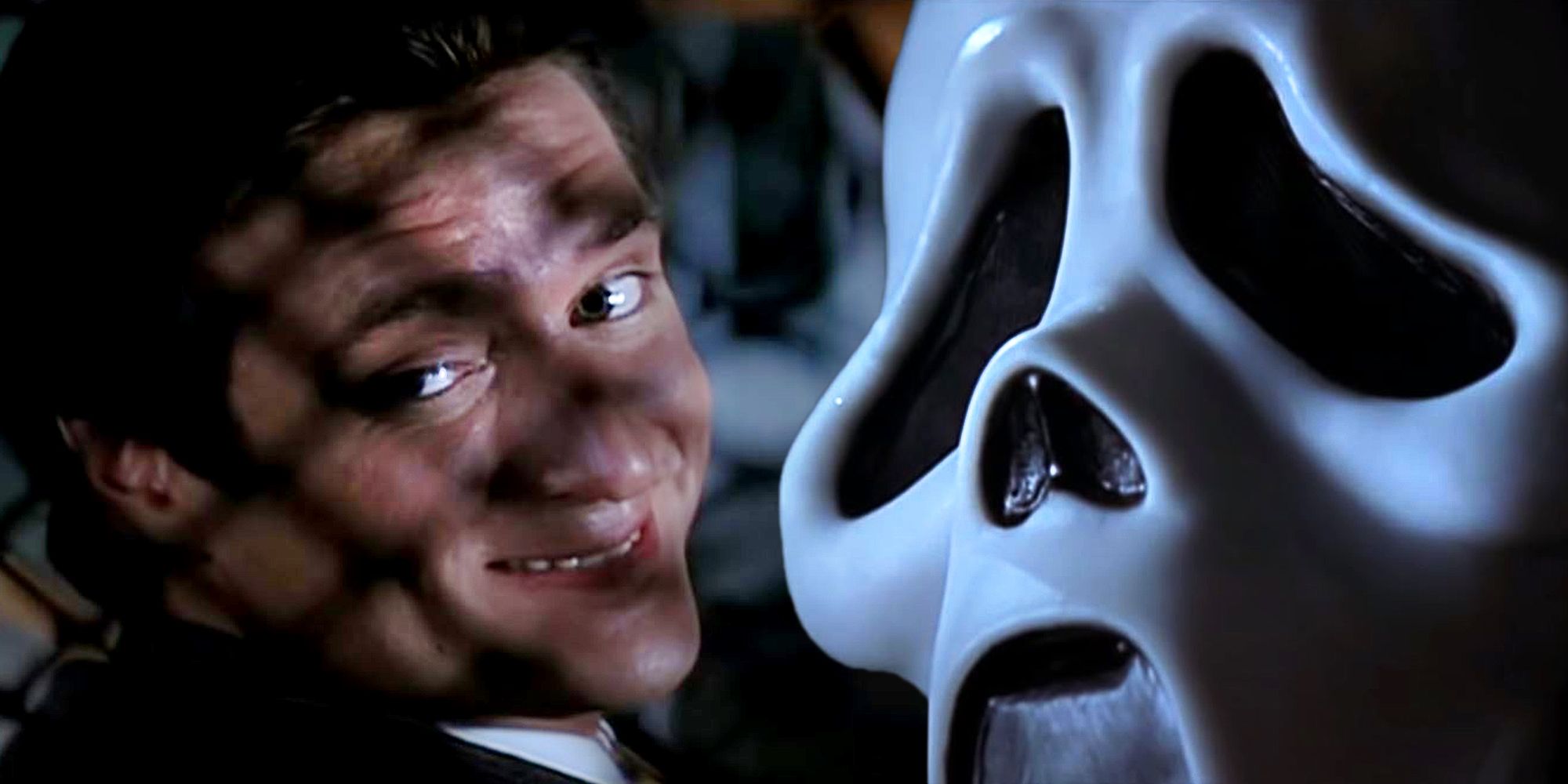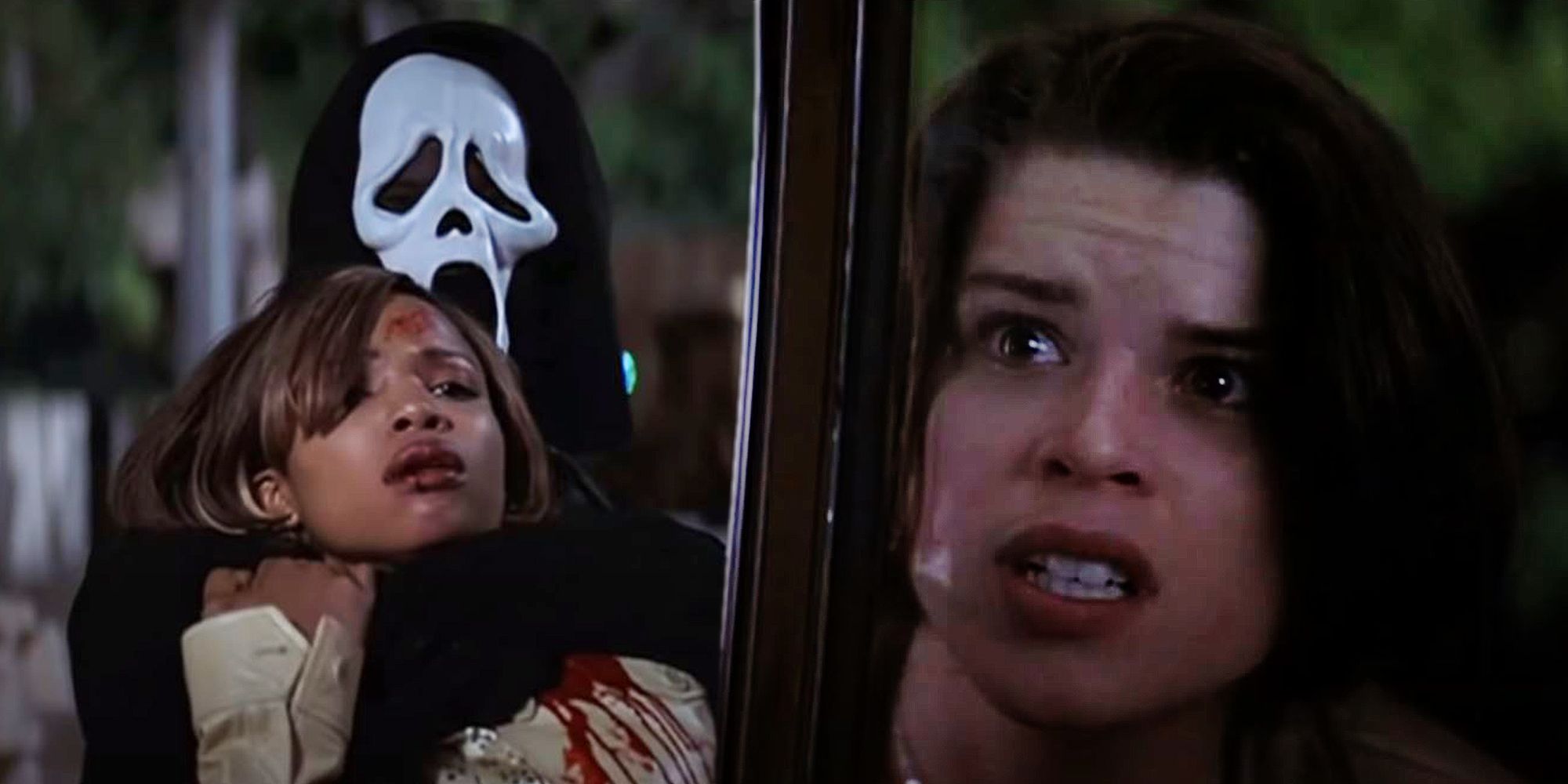
Jump scares abound in horror movies, but very few of them have as much dramatic impact as the one that precedes Scream 2's iconic car crash scene. Wes Craven doubled down on the satire of the original Scream with the sequel's heightened parody of the slasher subgenre. Scream 2 used the first installment as the in-universe movie that inspires a new Ghostface to go on a killing spree, forcing Sidney Prescott (Neve Campbell) to relive her fears and try to stop the killer once again, who only spills blood to become famous with the media's coverage of his murders.
The car crash scene in Scream 2 is famous for its gory climax, where a steel pipe turns the head of police officer Andrew Richards (Christopher Doyle) into a bloody pulp. This moment solidifies Ghostface's unpredictability, which accentuates the big reveal of his true identity later on in the movie. However, the scene wouldn't be nearly as scary or effective if not for the perfect pacing of the jump scare that precedes it.
Curiously, Scream 2 takes a more subtle approach to jump scares than most of the movies it parodies. Sidney Prescott and Hallie McDaniel (Elise Neal) are unwittingly trapped inside a police car at their most vulnerable moment in the middle of the night. The streets become eerily silent, but the absence of incidental music suggests that tragedy is unlikely to strike at the moment. When officer Richards and officer Richard Andrews (Philip Pavel) poke fun at the recent murders (slightly tipping off the audience), Ghostface breaks the window and slices Andrews' throat. A conventional jump scare would have set the scene in a more constricted environment and would have given the audience much more time to predict the killer's appearance.

What makes this jumpscare so effective is that Ghostface doesn't disappear after killing Andrews. Instead, he amps up the intensity of the scene by getting into the car and running Richards over. As Ghostface accelerates with Richards on the hood, there's no way to know how the scene is going to end, until a construction site comes into view and the impalement happens. In short, the initial jump scare leads to an unpredictable tragedy - one that has clear consequences on the rest of the movie, whereas most other jump scares normally limit themselves to keeping the viewer's attention up between major plot points.
For a late '90s horror movie, Scream 2 was ahead of its time when it came to jump scares, as the car crash scene didn't stop with Andrews' death. When Sidney tries to exit the car over Ghostface's unconscious body, she accidentally honks the car's horn, which startles the viewer at the same time it worsens her nervousness. The likelihood of Ghostface suddenly waking up drops when Hallie exits the car without a problem, only for Sidney to walk back and realize Ghostface is gone. The final jump scare then builds upon the expectations that the previous ones had established, proving that Ghostface has always been in full control of the situation when he appears behind Hallie and slices her throat.
Horror movies have always used jump scares to keep the audience on the edge of their seat. Most of the time, this dramatic device succeeds in startling the viewer but fails to contribute narrative value to the story. It would be easy for Scream's killers to appear out of nowhere without a logical explanation, but Ghostface's unpredictability is precisely what makes him a convincing horror antagonist. The Scream franchise has prevailed on this front since the beginning of the first movie - particularly in the famous "phone call" scene - but the gruesome car crash scene in Scream 2 takes the prize because of its dramatic weight.
from ScreenRant - Feed https://ift.tt/3pVgcmv


0 Comments